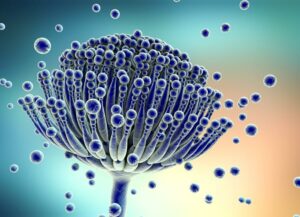Álvaro García
Some essential amino acids have long been recognized as critical nutrients to be added to the diet of high producing dairy cows. Lysine and methionine for example, are the two main amino acids that when deficient and or unbalanced can impair milk production. Although it is also well known that lysine is indispensable for growing livestock, recent research suggests that when supplemented prepartum it can also have a positive effect during the lactation.
The transition period in dairy cows has been defined as going from the last 3 weeks of the dry period to the first 3 weeks of lactation. It is a time of hormonal and dietary changes characterized by a reduction in feed intake and mobilization of body reserves. As a result, body reserves are mobilized to account for the deficit in nutrient uptake, mainly fat and protein.
Importance of amino acids in the transition period
It is easy to understand then that together with fat and protein mobilization there will also be amino acid deficiencies. A deficiency of the latter will undoubtedly affect the systems in which they actively participate such as the immunity, and gastrointestinal and liver tissues. Even if the requirements for methionine are somewhat met, what matters most is not only the amounts supplied but also the balance with the other limiting amino acid, lysine.
According to the NRC the amounts of intestinal supply of lysine and methionine are 7.2 and 2.4% of the total protein digested in the small intestine. This ratio of 3 between both amino acids needs to be maintained for protein synthesis to occur efficiently. However, as every nutritionist knows, cows do not “eat percentages” but grams of nutrients.
In other words, the concentration of both amino acids and their ratio could be perfect and despite it, the amounts ingested inadequate to synthesize the total protein required. The NRC 2001 stated that the metabolizable protein requirements during the prepartum are 742 g/day, while other contemporary research suggested them to be 1,000 g/day, a nearly 35% difference!
Apparently, this has been explained because of a mathematical overestimation by the NRC of the efficiency with which the uterus utilizes protein during the prepartum period. As a result, it has been shown that if additional rumen-protected lysine and methionine are fed to cows in transition milk production and milk protein during the lactation increase.
As mentioned above lysine is oftentimes limiting in feeds, either absolutely or due to a reduction in its availability (i.e. heat damage), and as a result the lysine that reaches the small intestine and is absorbed is oftentimes limiting.
A recent experiment (Fehlber et al., 2020) addressed these issues by determining the effects on production, health, and plasma amino acid concentration of multiparous Holstein cows fed rumen protected lysine prepartum, postpartum, or both. A total of seventy-five multiparous cows were blocked by parity, previous 305-d mature equivalent milk production, expected calving date, and body condition score during the close-up period.
They were then assigned to 1 of 2 treatments in a complete block design and a 2 × 2 factorial arrangement of treatments.
- Total mixed ration with rumen protected lysine close-up diet from –28 days to calving with forage at 68% dietary DM, and concentrate containing rumen protected lysine at 0.54% of DM.
- Total mixed ration without rumen protected lysine close-up diet from –28 d to calving, with forage at 68% of DM.
Once they calved, half of the cows in each treatment were assigned to a diet with forage at 55.5% of dietary DM and with or without rumen protected lysine at 0.40% of DM.
Rumen-protected lysine prepartum increases milk production
Cows that received lysine during the close-up period had greater body weight at −2 and −1 weeks pre-calving compared to the control; comparing -4 to -1 weeks however showed no differences. Body weight (717 kg) was greater and DM intake (18.1 kg/day) tended to be greater in cows that received lysine before and after calving compared to the controls.
Energy-corrected milk (48.8 kg/d), milk fat (1.9 kg/d), milk true protein (1.4 kg/d), and milk lactose yields (2.1 kg/d) were greater for cows in that received lysine during the close-up period, and at the beginning of the lactation, and in those that received lysine during close-up and none during early lactation. Concentrations of plasma lysine prepartum (69.8 µM) was greater in supplemented close-up cows compared to the controls (62.5 µM).
These results clearly showed that supplementing with protected lysine during the close-up period tended to increase postpartum intake and increased energy-corrected milk and milk component yields. These results are significant since they show that the supply of rumen protected lysine positively influenced cow performance post-calving, while supplementing it after calving had no effect.
It is likely that the supplementation of lysine in the close-up period enhanced the development of the mammary gland tissue. This experiment showed that the largest impact with lysine supplementation on performance and efficiency happened when fed during the close-up period and not early in lactation.
Since intakes are greatly increased during lactation prioritizing the use of protected lysine during the close-up period will have significant economic impact on dairy cow feeding and the efficiency of utilization of methionine in cow metabolism.
Reference
L. K. Fehlberg, A. R. Guadagnin, B. L. Thomas, Y. Sugimoto, I. Shinzato, and F. C. Cardoso. 2020. Feeding rumen-protected lysine prepartum increases energy-corrected milk and milk component yields in Holstein cows during early lactation. J. Dairy Sci. 103:11386–11400.
© 2021 Dairy Knowledge Center. All Rights Reserved.











